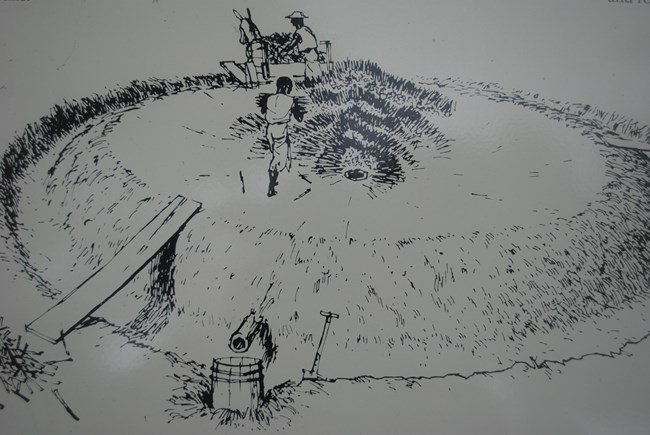
NPS Photo At the time of the battle, patriot leaders were trying to make their fortunes from the area’s vast tracts of longleaf pines. Tall trunks became ships’ masts. Pine rosin waterproofed rigging and sealed boat hulls. The local wilderness became a key player in the 18th- century international economy. With its empire expanding, Great Britain depended on the Carolinas’ naval stores (pine products) to build a massive fleet of wooden ships. Tensions over British trade restrictions and price controls on naval stores fueled conflicts between colonists and Crown. Moores Creek, which flows throughout the park, not only figured in the battle, but was critical to the naval stores economy. Surrounded by pine forests that generated tar and turpentine, but with few passable roads to get the heavy barrels to market, the colonists used an intricate web of tidal creeks and rivers to reach the port of Wilmington – and the world. Moores Creek and connecting waterways were the interstate highways of the 18th century and helped make the Carolina coast the world capital of shipbuilding products. This was a different forest in 1776. Dominated by stately longleaf pines and swept by periodic wildfires, the historic forest had more open glades and hardly any underbrush. By 1900 the developing population was suppressing most wildfires and switching to an economy of faster-growing loblolly pines – the species most frequently seen in the area today. Recently the National Park Service has begun planting longleaf pine seedlings. In time the area will more likely closely resemble the historic scene. The change in forest says it all: longleaf pines are now rare in this area. Although the naval stores industry thrived well into the 19th century, it was doomed as soon as the first ironclad ships put to sea. Pine tar from longleafs was no longer needed to treat ships’ hulls. Faster-growing loblolly pines fed the burgeoning pulp and lumber industries and began to dominate coastal forest. Along this trail you may notice several stands of young longleaf pine seedlings. The National Park Service is planting them to provide a window on the colonial economy and to more accurately depict the battlefield landscape. Gradually the forest will begin to resemble the scene where the patriots labored and fought.
|
Last updated: October 5, 2023
